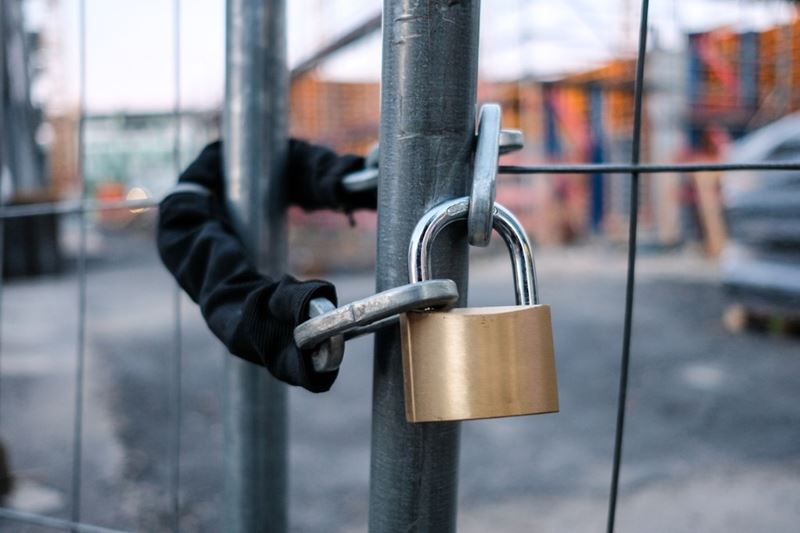How contractors can avoid equipment losses
How contractors can avoid equipment losses
Construction projects have a lot of moving parts, and unexpected challenges are a given. Unfortunately, equipment losses from theft, fire, and transportation and operations are common challenges —and costly ones. While there is no sure-fire way to guard against equipment loss and damage, construction business owners and contractors can take action to prevent and mitigate risks.
Theft
Construction equipment is an attractive target to criminals, who can make huge profits selling stolen machines and tools. Job sites can be especially vulnerable to theft and vandalism if they’re at a remote location or lack the proper security measures.
Mitigating losses starts with administrative controls. Management must be committed to theft prevention and communicate a “zero tolerance” philosophy, so employees take their efforts seriously. Implementing theft prevention policies and unannounced site inspections can help control losses, particularly from “inside jobs”, which unfortunately do happen from time to time.
On site, there are a wide range of security measures that can be implemented. Premises security can include fencing and gates to minimize access points, lighting, and motion-sensitive video cameras and alarms that are actively monitored.
Prevention measures can also be taken with the equipment itself. For example, beyond antitheft marking and tracking devices, small and medium-sized equipment can be protected by using “smart” keys, locking wheels and trailer hitches. For larger equipment, hidden kill switches, fuel shutoffs, track locks and alarm systems can be installed.
Fire
Vehicles such as dump trucks and bulldozers have complex mechanical systems and operate under intense conditions, resulting in an above average fire risk. Similarly, off-road vehicles accumulate debris on the frame and under the chassis, creating a greater risk of ignition as they use combustible liquids such as fuel, oil, grease, and hydraulic fluid.1 It’s likely some or all of these vehicles will find themselves at your construction site, so fire risks and prevention should be top of mind.
Fire prevention starts with identifying where fires are most likely to occur, delivering ongoing training, and communicating the plan to everyone on the work site.3
Minimizing the risk of fire involves conducting regular inspections and maintenance to your equipment’s high-risk areas, such as the electrical system, engine blocks, turbochargers, and braking systems. It’s also important not to overlook the basics, such as routine cleaning of debris.3
In order to fuel your equipment safely, one solution is to engage an outside vendor to provide fuel services. If that’s not possible, some considerations for contractors include:
- locating the onsite fuel supply away from ignition sources
- grounding and bonding procedures when handling and dispensing fuel
- establishing procedures for immediate cleanup of fuel spills
In addition, training all employees in the use of fire extinguishers, which must be available on each piece of equipment, is a must.4
Transportation & Operations
Construction equipment can be damaged not only when it’s in operation, but also while being transported between jobs and storage sites. Whether in operation or transport, employees should be thoroughly trained on company policies, safety rules and emergency procedures.5
While there are plenty of hauling companies with the right equipment and expertise for successful transport, construction business owners should keep a few key considerations top of mind in order to transport heavy equipment safely:
- check the owner’s manual for specific instructions on how it should be transported
- map the most linear route ahead of time, keeping an eye out for road widths, overhead passes and bridges
- immobilize equipment wheel components
- outfit vehicles with proper banners, signs and lights.6
On the equipment operations side, preventing damage from overturns starts with hiring drivers with a high level of knowledge, skill and experience. In addition, there are specific operating procedures that should be observed, such as load considerations; the environment, including soil conditions and ground irregularities; clearances, including keeping loads low when overhead obstructions are present; and slopes, including avoiding side hill travel.7
While there are no guarantees in any construction project, implementing controls can reduce the likelihood of equipment losses. In addition, construction business owners and contractors should ensure there are no gaps in their insurance coverage, so they can protect their business and keep their construction projects running smoothing.
Sources
1 “Best practices for construction equipment from fire damage,” California Builder and Engineer,” Jan. 25 2018.
2 “Construction site fire safety: A guide for construction of large buildings,” Canadian Wood Council and University of the Fraser Valley, April 2015
3,4,6 Contactors’ Equipment Guide to Loss Prevention, Inland Marine Underwriters Association, 1998.
5 “A how-to for transporting equipment,” Equipment Journal, Jan. 19, 2019 and “How to safely load and transport equipment,” Thompson Tractor Co.



